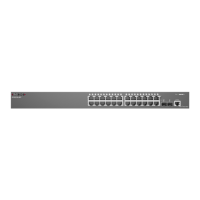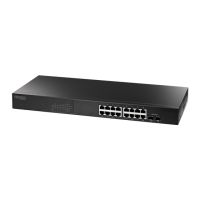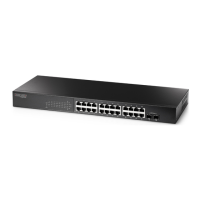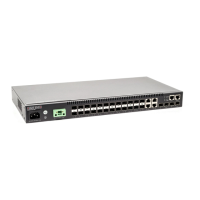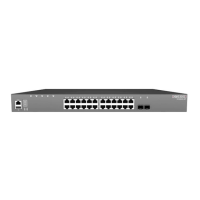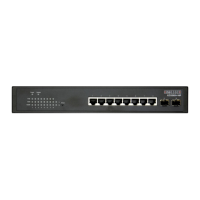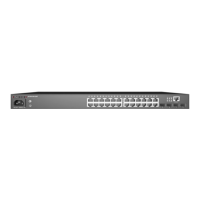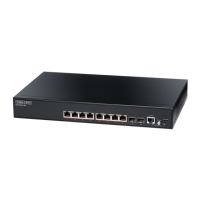C
HAPTER
5
| Interface Configuration
Port Configuration
– 143 –
COMMAND USAGE
◆ Cable diagnostics are performed using Time Domain Reflectometry
(TDR) test methods. TDR analyses the cable by sending a pulsed signal
into the cable, and then examining the reflection of that pulse.
◆ This cable test is only accurate for Gigabit Ethernet cables 0 - 250
meters long.
◆ The test takes approximately 5 seconds. The switch displays the results
of the test immediately upon completion, including common cable
failures, as well as the status and approximate length to a fault.
◆ Potential conditions which may be listed by the diagnostics include:
■
OK: Correctly terminated pair
■
Open: Open pair, no link partner
■
Short: Shorted pair
■
Not Supported: This message is displayed for any Fast Ethernet
ports, or Gigabit Ethernet ports linked up at a speed lower than
1000 Mbps.
■
Impedance mismatch: Terminating impedance is not in the
reference range.
◆ Ports are linked down while running cable diagnostics.
PARAMETERS
These parameters are displayed:
◆ Port – Port identifier.
◆ Type – Displays media type. (FE – Fast Ethernet, GE – Gigabit
Ethernet, Other – SFP)
◆ Link Status – Shows if the port link is up or down.
◆ Test Result – The results include common cable failures, as well as the
status and approximate distance to a fault, or the approximate cable
length if no fault is found.
To ensure more accurate measurement of the length to a fault, first
disable power-saving mode on the link partner before running cable
diagnostics.
For link-down ports, the reported distance to a fault is accurate to
within +/- 2 meters. For link-up ports, the accuracy is +/- 10 meters.
◆ Last Updated – Shows the last time this port was tested.
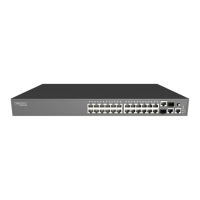
